Introduction
Strength Testing – A Small Piece of the Full Picture
When it comes to rehabilitation programming and return-to-sport after hamstring strain injuries, it is tempting to focus on isolated physical qualities. Maximum strength capacity has frequently become a central criterion guiding many rehabilitation programmes. However, while physical qualities are clearly important in rehabilitation, it does not tell us how well an athlete functions. Biomechanical insights can provide more context, helping us shape both rehabilitation planning and return-to-play assessments.
“Symmetry on strength tests doesn’t always equal readiness for sprinting.”
In this article, I aim to share how I use biomechanical assessments to inform rehab and RTP decisions, drawing on a recent case of a proximal hamstring tendon repair in a 100m sprinter.
In many instances, return-to-play criteria still prioritise strength-based markers. There is no shortage of options: a recent Sportsmith article by Nicholas Ripley highlighted more than 10 published isometric hamstring testing methods. When we add eccentric and concentric assessments at multiple velocities, and the evaluation of force at different joint angles, the number quickly exceeds 30 different strength tests described in the literature and used in clinical practice. This can create confusion over which tests truly guide rehabilitation and RTS clearance. More importantly, a question remains as to how well an athlete transfers these physical qualities into task-specific movements.
To illustrate this we can look at some data from a recent case of mine; a 100 meter sprinter following a left-side proximal hamstring tendon repair. Classic strength-based measurements are shown in the below figures, where we used a combination of handheld dynamometry, force plate testing and isokinetic dynamometry across different phases of rehabilitation to inform rehab progression and programming of running intensity. Interestingly, what we can see is that between limb asymmetries and comparison to reference datasets are small, less than the arbitrary 10% threshold we all use and, in many instances, favour the left (injured) side (this was also true for biodex testing). This may suggest this athlete is ready for return and developed the necessary physical qualities to return to sport. However, when we look beyond isolated strength tests and examine biomechanics, a different picture emerges.
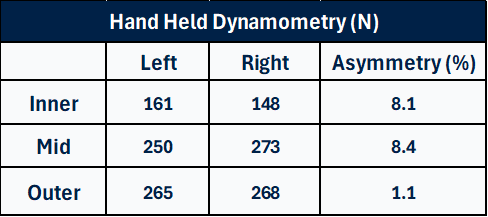
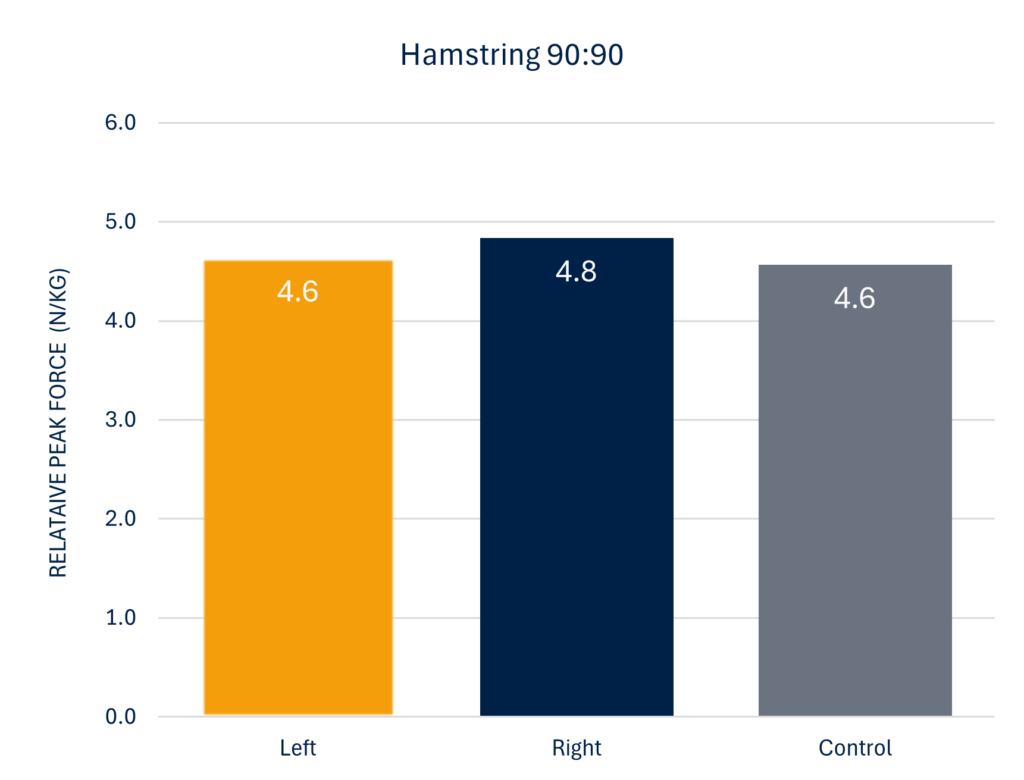
Biomechanics Reveal Functional Deficits
Despite strong performance on traditional force measures, functional deficits are clearly observed on biomechanical testing. Specifically, reductions in hip power generation and negative knee power were observed during the swing phase (pictured in the below figures).
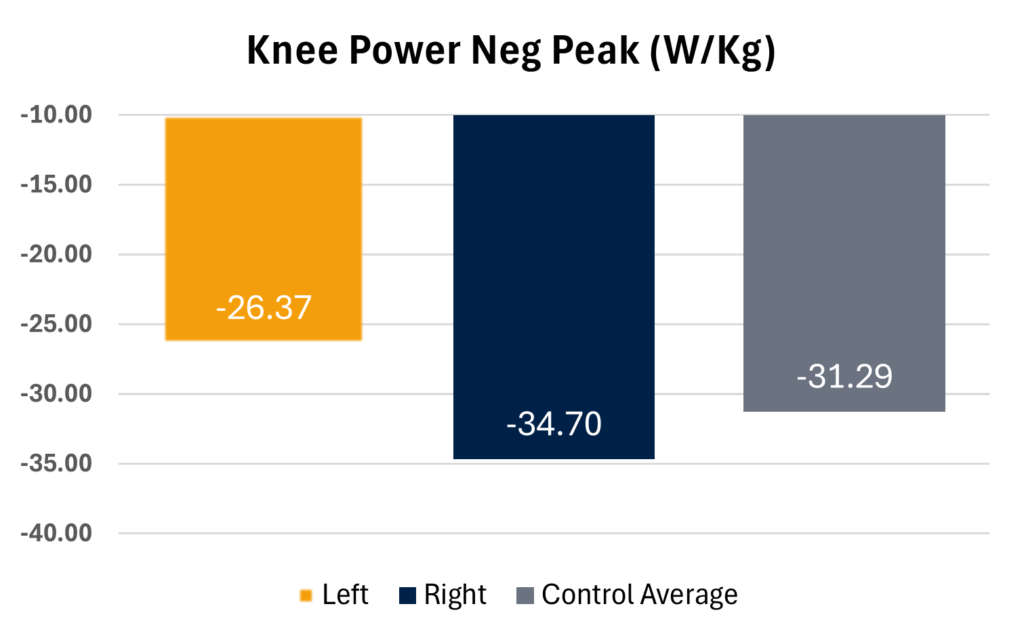
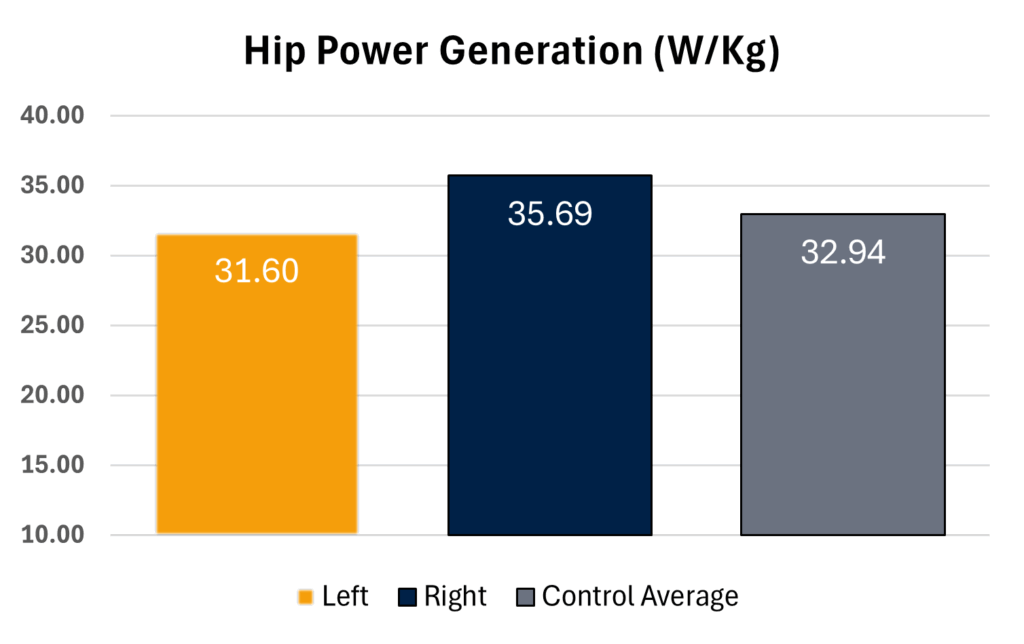
What does this mean?
Well, joint power represents the interaction between joint torque and angular velocity. Power generation can often be considered “concentric” energy generation, while negative power reflects “eccentric” absorption of energy. Note: I’m not a fan of inferring a muscle action, hence the quotations. “Eccentric” work may actually be due to lengthening of passive tissues rather than a true muscle action. Regardless, in this case, these findings suggest the athlete has two issues:
- Is less able to generate hip extension power during swing
- Has a lower capacity to absorb and recycle elastic energy at the knee
How does this inform Rehabilitation?
This leaves us with two clear rehabilitation aims:
Aim 1 - Restore and enhance hip extensor function in high flexion positions (recreating joint angles seen during late swing).
Aim 2 - Improve the hamstrings’ ability to absorb and recycle energy at the knee.
From these aims we can map out rehab exercises and progressions such as those depicted in the table below. Starting with controlled strength work, moving into faster and more elastic loading, and finally into sprint-specific drills that mirror the functional demands of high-speed running.

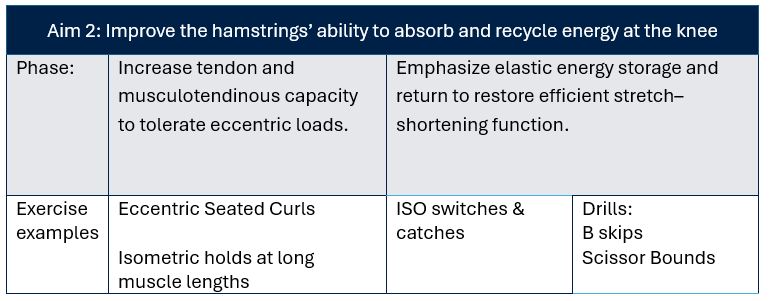
From Testing to Training Transfer
The value of combining traditional strength tests with biomechanical assessments is that it helps direct our rehab focus. Instead of assuming readiness from force outputs alone, we can be more specific as to where deficits still exist, then design rehab that directly targets those deficits.
In this case, hip power generation and eccentric energy absorption at the knee were the key functional limitations. By aligning the rehab programme with these deficits, the athlete’s training becomes more purposeful: every exercise mapped to restoring both capacity AND function.
Why This Matters for Return to Play
We know that Hamstring injuries are notorious for high recurrence rates. One reason may be that RTS decisions often rely heavily on isolated strength markers. An athlete may test “symmetrical” or “above a threshold”, but if they cannot coordinate hip–knee function during sprinting, they may remain at risk.
“Return-to-play should be grounded in how the athlete moves, not just how strong they are.”
Biomechanical insights allow us to bridge this gap, ensuring that return-to-play criteria is grounded in how the athlete moves, not just how strong they are. Furthermore, when there are a vast number of rehab options and exercises we could select from, understanding mechanics and functional deficits can help us to be more specific with the rehab exercises we select.
Perhaps the challenge in hamstring rehab isn’t a lack of tests or exercises, but knowing which ones truly matter for function.
Closing
By combining traditional strength tests with biomechanical insights, we can move beyond thresholds and symmetry and instead focus on what really matters: restoring function for safe and effective return to play.